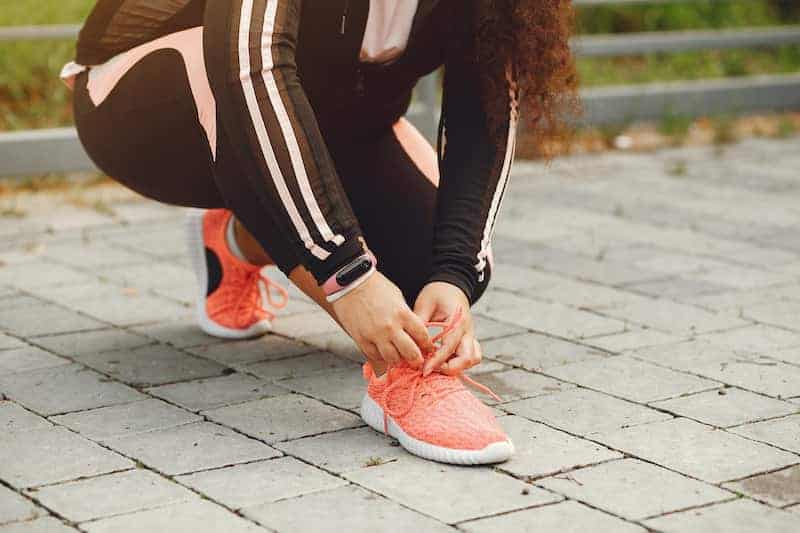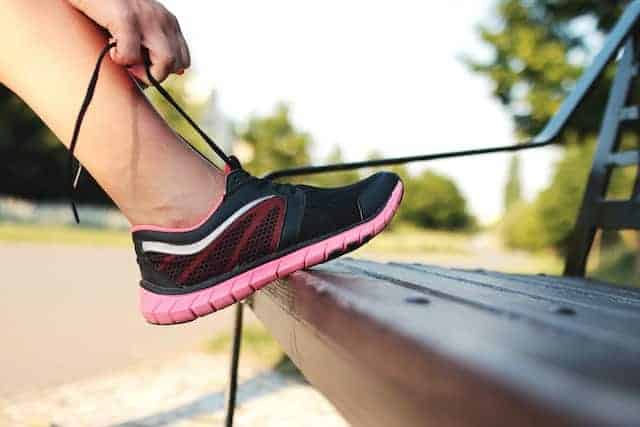Running shoes have become an essential part of a runner’s gear. They provide cushioning, support, and protection to the feet while running. One of the most noticeable features of a running shoe is the elevated heel. The elevated heel has become a standard feature in most running shoes, but have you ever wondered why?
The elevated heel can be seen throughout history dating back to the 10th century Persian and 3500 BC Egyptian life. The elevated heel was primarily used to make the shoe more comfortable for runners. The elevated heel provides extra cushioning and support to the heel, which helps absorb each stride’s impact. This reduces the stress on the feet, ankles, and knees, making it easier for runners to run longer distances without experiencing fatigue or pain. The same doubt is when people see running shorts with liners; they look general but have many functions to help runners.
The Purpose of Extended Heels in Running Shoes

Running shoes are designed to support and cushion the feet during running. One of the key features of running shoes is the extended heel, which is a raised portion of the sole at the back of the shoe. The extended heel has a specific purpose in running shoes, and this section will explore why running shoes have extended heels.
The extended heel in running shoes serves multiple purposes. Firstly, it helps to absorb shock when the foot strikes the ground. When a runner lands on their heel, the extended heel in the shoe acts as a cushion, reducing the impact of the foot hitting the ground. This helps to protect the feet and reduce the risk of injury.
Secondly, the extended heel provides support to the foot and ankle. It helps to stabilize the foot and prevent it from rolling inward or outward, which can cause discomfort and injury. The extended heel also provides additional support to the Achilles tendon, which is a common site of injury in runners.
Finally, the extended heel in running shoes can help to improve running form. It encourages runners to land on their midfoot or forefoot rather than their heel, a more efficient and natural running gait. This can help to reduce the risk of injury and improve running performance.
In summary, the extended heel in running shoes serves multiple purposes, including shock absorption, support, and improved running form. It is an essential feature of running shoes that helps to protect the feet and reduce the risk of injury during running.
The Benefits of Extended Heels in Running Shoes
Improved Shock Absorption
One of the primary benefits of extended heels in running shoes is improved shock absorption. When a runner’s foot strikes the ground, it creates a shockwave that travels through the body. This shockwave can cause discomfort and even injury if not properly absorbed. The extended heel in a running shoe provides additional cushioning to absorb this shockwave, reducing the impact on the body.
Studies have shown that the increased cushioning provided by extended heels can also help reduce the risk of stress fractures and other injuries caused by repetitive impact.
Increased Stability and Balance
Another benefit of extended heels in running shoes is increased stability and balance. The elevated heel provides a larger surface area for the foot to land on, which can help improve balance and prevent ankle sprains and other injuries.
Additionally, the extended heel can help prevent overpronation, which occurs when the foot rolls inward excessively during the running stride. This can lead to various injuries, including plantar fasciitis and shin splints. The added stability the extended heel provides can help prevent overpronation and reduce the risk of these injuries.
Reduced Risk of Injury
Overall, the benefits of extended heels in running shoes can help reduce the risk of injury for runners. The extended heel’s improved shock absorption and increased stability and balance can help prevent various injuries, including stress fractures, ankle sprains, and overpronation-related injuries.
However, it’s important to note that extended heels may not be appropriate for all runners. Some runners may prefer a more minimalist shoe, while others may require additional support and cushioning beyond what an extended heel can provide. Runners need to find a shoe that fits their individual needs and preferences.
The Science Behind Extended Heels in Running Shoes
Impact Forces and Pronation
When running, the foot strikes the ground with force up to three times the runner’s body weight. This force can cause injuries to the feet, ankles, knees, and hips. Extended heels in running shoes are designed to absorb some of this impact force and reduce the risk of injury. The raised heel also helps to prevent overpronation, which is when the foot rolls too far inward after striking the ground. Overpronation can cause stress on the ankle and knee joints, leading to injury. The raised heel helps to keep the foot in a more neutral position, reducing the risk of overpronation.
Biomechanics of the Foot and Ankle
The foot and ankle are complex structures that absorb shock and provide stability. When running, the foot and ankle go through a series of movements that help to absorb shock and propel the body forward. The extended heel in running shoes helps support the foot arch and provide stability to the ankle. This support helps to reduce stress on the foot and ankle, reducing the risk of injury.
The Role of Heel-to-Toe Drop
The heel-to-toe drop is the difference in height between the heel and the shoe’s forefoot. Running shoes with extended heels typically have a higher heel-to-toe drop than shoes with a flatter sole. The higher heel-to-toe drop can help shift the body’s weight forward, making it easier to land on the midfoot or forefoot when running. This can help to reduce the impact force on the foot and ankle, reducing the risk of injury. However, it’s important to note that a higher heel-to-toe drop is unsuitable for all runners and can cause problems for some.
Choosing the Right Running Shoe for You

Considerations for Foot Type and Gait
When selecting a running shoe, it is essential to consider your foot type and gait. The wear on your current running shoes can help determine your foot type. If the inner soles of your shoes are usually worn down, you are an overpronator and probably have a low arch. If the outer soles of your shoes are usually worn down, you are an under pronator and probably have a high arch. If your shoe shows even wear, you have a neutral arch and are a normal pronator.
It is also essential to consider your gait when selecting a running shoe. Most runners can choose a neutral shoe, but if your foot tends to roll to the far outside or inside, some shoes can help you. For example, if you are an overpronator, you may want to look for a shoe with motion control or stability features to help correct your gait. If you are an under pronator, you may want to look for a shoe with extra cushioning to help absorb shock.
Factors to Consider When Selecting a Running Shoe
When selecting a running shoe, there are several factors to consider:
- Fit: Your shoe should fit well from the start with no breaking-in period. Ensure you have enough toe room (about a thumbs width space between the end of your longest toe and the end of the shoe) and that the shoe feels snug but not tight.
- Comfort: Look for a shoe with good cushioning and support. The right cushioning will help absorb shock and reduce the risk of injury.
- Weight: Look for a shoe that is lightweight and flexible. A lighter shoe can help improve your speed and reduce long-run fatigue.
- Style: While it’s essential to focus on fit, feel, and function over fashion, there are still plenty of stylish running shoes available that meet all of your performance needs. Some runners even consider the color of the shoe to be an essential factor.
By considering your foot type, gait, and the above factors, you can choose the right running shoe and reduce your risk of injury while improving your performance.

Michael is heavily inclined towards traveling to natural places and documenting cultures/people from different parts of the world. He also loves hiking and camping and is spirited toward all outdoor activities. He will share his passion for outdoor life and brands or products we use outside our homes. He has good research skills, and that’s why you can see why his articles are packed with info that is factual and not readily available. He also has the vision to travel the whole world and share it with all readers of Outdoor Favor.
